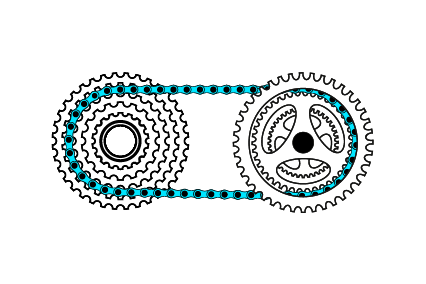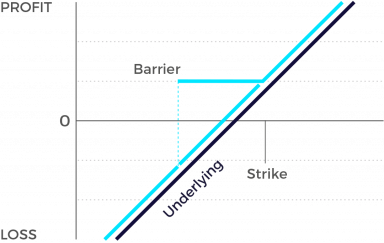Participation Products
Bonus Certificate

If the underlying increases, usually the price of the corresponding participation products increases as well. If the underlying falls, usually the price of the corresponding participation products falls as well. Often the participation products have no limited lifespan which is indicated by the suffix "Open End". In addition, the issuer risk must be taken into consideration with all participation products, since the capital invested could be lost if issuer becomes insolvent – irrespective of the performance of the underlying asset.
Market expectation
- Underlying moving sideways or rising
- Underlying will not breach barrier during product lifetime
Characteristics
- Participation in performance of the underlying
- Minimum redemption is equal to the strike (Bonus Level) provided the barrier has not been breached
- If the barrier is breached the product changes into a Tracker Certificate
- With greater risk multiple underlyings (“Worst-of”) allow for a higher bonus level or lower barrier
- Reduced risk compared to a direct investment into the underlying
Graphic

Bonus certificates: During the bull market years of 2003 through 2006, many investors in discount certificates were annoyed that, because of the predetermined cap, their returns lagged those to be had in the general market. At the same time, though, they didn’t want to make do without a certain safety buffer against price declines. The solution to that problem was the bonus certificate. At the time they’re issued, bonus certificates normally have a term to maturity of two to four years. They guarantee that you’ll receive a specified payout (“bonus level”) as long as the underlying instrument doesn’t touch or fall below an established price level (“safety threshold”) during the term of the certificate. In contrast to discount certificates, the maximum payback isn’t limited to a fixed amount: if the underlying instrument rises above the bonus level, you continue to participate in the price gains. Depending on the features of the product, you can often earn double-digit returns while assuming an acceptable degree of risk. However, if the safety threshold is breached, then the protective mechanism of the bonus certificate vanishes in a heartbeat. In such an instance, you’ll be in the same economic situation when the certificate matures as you would have been had you invested directly in the underlying instrument. Once the breach occurs, the certificate behaves just like an index certificate. If after a penetration of the safety threshold the price of the underlying instrument goes back up, you can still participate 1:1 in those gains; however, the right to a guaranteed payout of the bonus level no longer exists and it is not reinstated as a result of any such move. The probability that the safety threshold will be penetrated already increases when the price of the underlying instrument starts to ease toward that level. Thus in this example, the price of the bonus certificate can retreat significantly even before the threshold is hit. By the same token, the price can rise all the more sharply when the underlying instrument gains distance again from the safety threshold without having penetrated it.